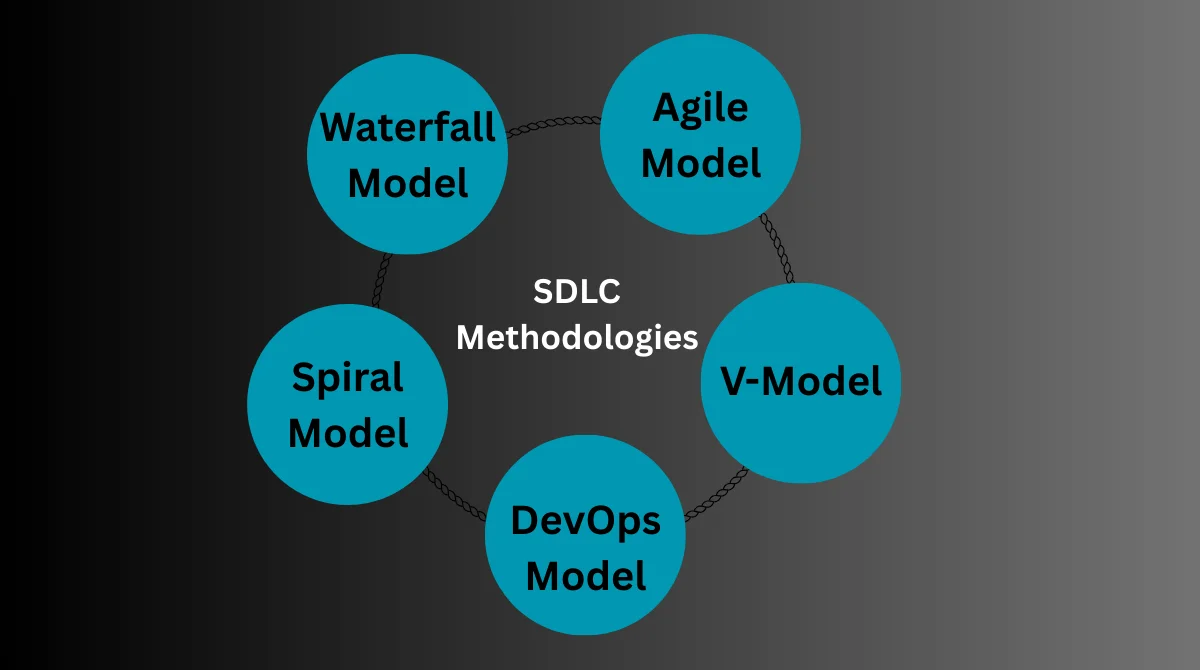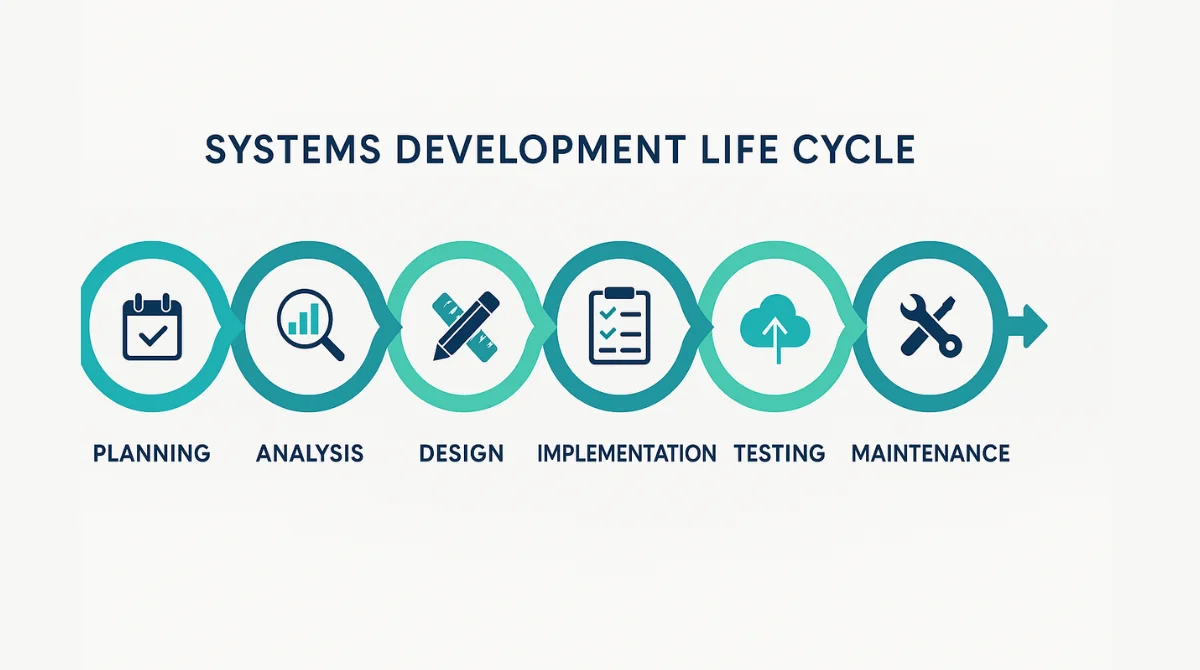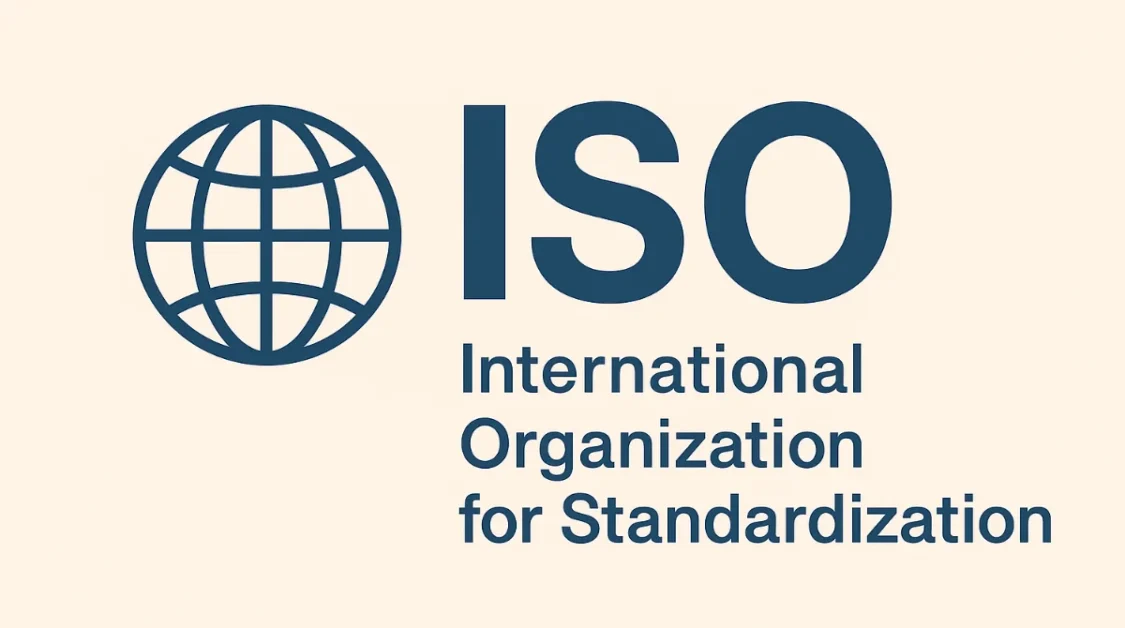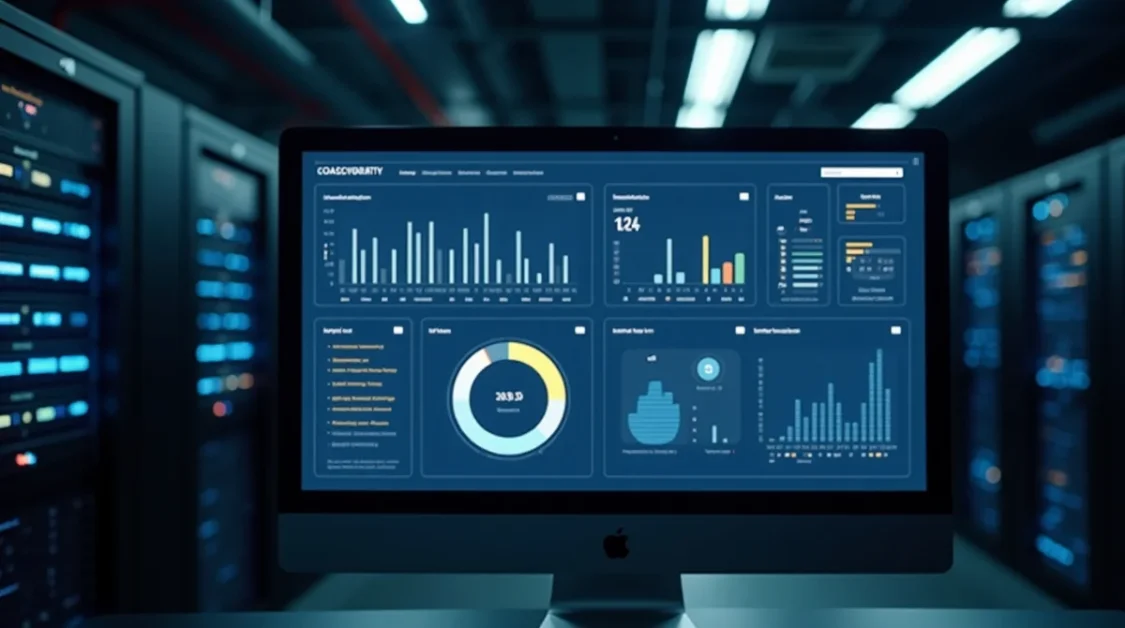The Systems Development Life Cycle (SDLC) is a structured process used by software developers and project managers to design, develop, test, and deploy information systems. It provides a systematic approach to building software applications, ensuring that they meet user requirements and are delivered on time and within budget.
Why is SDLC important?
Systems Development Life Cycle is important because it provides a clear, organized process for developing systems. It helps teams plan and manage projects efficiently, reducing risks and mistakes. The finished product better satisfies user needs and quality standards when the SDLC is followed.It ensures problems are caught early through testing. Overall, SDLC saves time and money by guiding smooth development and maintenance.
Phases of the SDLC
The SDLC typically consists of several distinct phases, each with specific objectives and activities:
- Planning: Define project goals, scope, estimate resources, and conduct feasibility studies.
- Analysis: Compile thorough user requirements, record them, and develop process models.
- Design: Create high-level and low-level designs, including UI/UX and security planning.
- Implementation (Coding): Develop the system by writing code, following standards, and using version control.
- Testing: Test components, integrations, full system, and confirm user acceptance.
- Deployment: Deploy the system using strategies like Big Bang, phased rollout, or pilot launch.
- Maintenance and Support: Fix issues, improve performance, add features, and provide user training.
SDLC Methodologies

Various methodologies guide the SDLC process, each suited to different project needs:
- Waterfall Model: a method that is sequential and linear, requiring that each step be finished before moving on to the next.
- Agile Model: focuses on customer collaboration, adaptability, and iterative development. Ideal for projects that need for flexibility in response to shifting specifications.
- Spiral Model: focuses on iterative risk analysis and development cycles while combining aspects of both Waterfall and Agile approaches.
- V-Model: An extension of the Waterfall model, emphasizing the relationship between development stages and their corresponding testing phases. Ensures validation and verification are integral parts of the development process.
- DevOps: Integrates software development and IT operations to enhance collaboration, automate processes, and increase deployment frequency. strives to produce top-notch software quickly and effectively.
Importance of the SDLC
Implementing the SDLC offers several benefits:
- Structured Approach: Provides a clear and organized framework for system development, promoting efficiency and accountability.
- Improved Project Management: Facilitates better communication among team members and stakeholders, ensuring alignment with project goals.
- Quality Assurance: Incorporates rigorous testing and evaluation processes, minimizing defects and enhancing system reliability.
- Risk Management: Through continuous risk assessment and mitigation strategies, helps identify potential issues early in the development process.
Challenges in the SDLC
Despite its advantages, the SDLC may encounter challenges such as:
- Scope Creep: Delays and budget overruns can result from unmanaged modifications or ongoing expansion of a project’s scope.
- Time and Budget Constraints: Projects often face pressure to meet deadlines and budget limits, which can strain resources and reduce quality.
- Requirement Ambiguity: Unclear or changing requirements can cause misunderstandings and rework.
To mitigate these challenges, it’s essential to establish clear project scopes, maintain open communication, and implement effective change management processes.
Choosing the Right SDLC Model
The nature, objectives, and restrictions of the project will determine which SDLC model is best. Although there is no one-size-fits-all answer, the following recommendations may help you make a decision:
- Use the Waterfall Model if the project requirements are clear, fixed, and well-understood from the start, and you want a simple, structured approach.
- Choose Agile when flexibility is key, requirements may change, and you want frequent feedback and quick releases.
- Pick the Iterative Model if the project is complex and you expect evolving requirements with improvements over time.
- Consider the V-Model when quality and testing are priorities, and you want to link each development phase to testing activities.
- Go for the Spiral Model if the project is large, high-risk, and you need ongoing risk assessment throughout development.
- The Big Bang Model suits small projects with unclear requirements but is risky and not recommended for critical systems.
Common Applications of the SDLC
The Systems Development Life Cycle (SDLC) is widely used in many areas where building or improving IT systems is essential. It helps organizations plan, develop, and deliver reliable systems efficiently. Here are some typical places where SDLC is applied:
- Business Software Development: Creating systems for finance, sales, inventory, and customer management.
- Healthcare Systems: Developing patient records, appointment scheduling, and billing systems.
- Government Projects: Building public service platforms, tax systems, and security applications.
- Education: Designing learning management systems and student information databases.
- E-commerce: Developing online stores, payment gateways, and order tracking systems.
- Telecommunications: Managing networks, billing, and customer support tools.
- Manufacturing: Controlling production lines, supply chain, and quality management systems.
Using SDLC ensures projects stay organized, meet requirements, and deliver quality results across various industries.
Systems Development Life Cycle vs. Software Development Lifecycle
Many people confuse the Systems Development Life Cycle (SDLC) with the Software Development Lifecycle, but they are slightly different concepts.
- Scope: Systems Development Life Cycle covers creating entire systems including hardware and processes, while Software Development Lifecycle focuses only on building software applications.
- Component: Systems SDLC covers network, hardware, databases, and training, while Software SDLC focuses only on software design, coding, testing, and deployment.
- Use Cases: Systems SDLC builds complete IT systems including hardware and training, while Software SDLC focuses on standalone software like apps or web platforms.
- Team Involvement: System SDLC involves a wide range of roles like analysts, hardware engineers, developers, admins, and support staff, while Software SDLC mainly includes developers, testers, and project managers.
- Output: The output of Systems SDLC is a full IT solution, while Software SDLC delivers a working software application.
Conclusion
SDLC provides a clear, step-by-step approach to building and maintaining effective systems. It helps teams stay organized, meet user needs, and deliver quality results on time. Choosing the right SDLC model fits different project goals and challenges. While some hurdles like scope changes exist, SDLC reduces risks and improves communication. Overall, it’s essential for successful software and system development.



